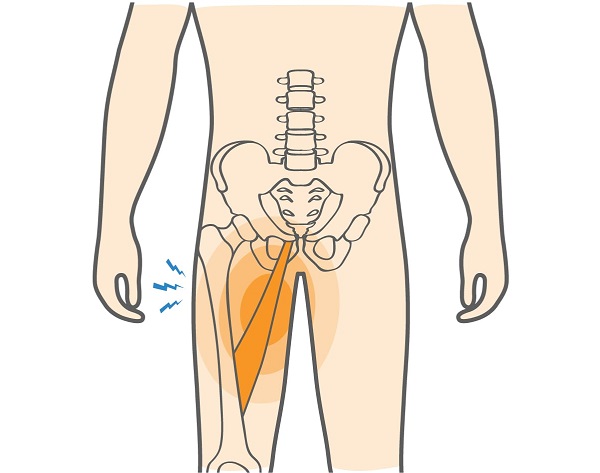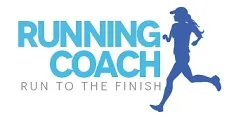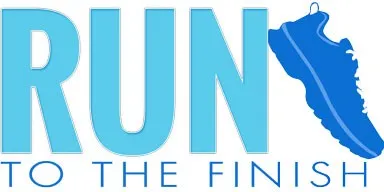Runners who experience groin pain after running have likely torn a ligament, tendon, or muscle. It’s also possible there is simply an overworked muscle. The groin is a complex network of tendons, muscles, and ligaments that attach to the pelvis and stabilize the hips and legs with side to side motion. That means it’s working VERY HARD and may require rest if injured.
There are different grades of severity and if you catch it early, you may be able to resolve it quickly. It could simply a be symptom of a stride imbalance, usually due to tight hips.
While groin injuries are more common in sports like soccer, which requires frequent, sudden movements, runners are also susceptible to groin pain. Common causes of groin pain in runners include overuse, improper training and high intensity sprints without good form.
Groin pain can present both while running and after running. It occurs in all levels of runners, from beginners to elite athletes. And I know you want to run through pain because runners are tough and maybe it will go away…don’t.
Be smarter.
The good news is that groin injuries in runners are typically minor and with the proper care and recovery, you can be back on the road in no time.
Left untreated, however, you’re heading for a bigger issue and a much longer recovery.
What is Groin Pain?
The most common reason for a groin strain is a tear in a ligament, muscle, or tendon of the adductor muscles, which run along the upper inner thigh.
The pain may appear suddenly build up slowly over time.
Your groin includes the area in the front of your hips, across your pelvis and along the inner thigh. This is actually three large muscle groups of your abdominals, iliopsoas and adductor.
The adductor muscles bring your leg towards the center line of your body. While running they help to stabilize the pelvis and help to propel you forward with each stride. Thus it’s easy for them to become tight or overworked.
9 Causes of Groin Pain after Running
Like most muscle injuries overuse or training incorrectly can lead to pain. The most common causes of groin pain can usually be fixed fairly easily, so take a look and see what you need to adjust to run pain free.
For the typical runner, groin pain is caused by a number of factors. But here are some potential causes of groin pain and some ways to resolve it long term.
#1 Trail Running
Adductor strains are somewhat common in trail runners or road runners who head out for a trail run for the first time. This type of injury is really just due to using muscles in a new way and should resolve itself quickly.
Additionally, if your trails are anything like Colorado you may spend the first half climbing and the second half running ALL downhill.
Downhill running can put additional strain on the groin area because the body is working harder to stabilize the pelvis.
- Start out slowly with technical trains
- Ensure you are engaging the core to stabilize yourself
- Get good shoes to help with foot fall and grip
#2 Weak Hips and Glutes
Runners are notorious for not supplementing their running with strength training and this leads to injuries! Sorry, I’m passionate about this particular point.
A runner with strong hips and glutes will have fewer injuries. Too often we fail to activate our glute muscles, which are key for efficiency and proper gait.
This causes imbalances in our hips and glutes that affect our gait. Weak glutes force your hips to sort of drag your leg forward instead of pushing off from the forefoot. Additionally, other muscles like your adductors have to work extra hard to keep your knee aligned and pelvis straight when other areas are week.
Dedicating some time to pre-hab will help keep groin pain and other common running injuries at bay.
Here are a few resources to help you get started.
- 30 Day Core Routine – Hips, Glutes and Abs for Injury Prevention
- Strength Training for Runners
- Hip Strength Exercises
I also include several videos that show you exactly how to do these moves on my YouTube channel.
#3 Overstriding
Overstriding during speed workouts (or regular runs) can lead to groin injuries.
Runners tend to think that long strides mean a faster pace, however, all it really does is slow you down and lead to injury. The extended leg is straight and stiff and affects the body’s ability to cushion the force from landing.
If you’re working on running faster then it’s time to improve your cadence.
This is going to increase the turnover of your legs, while helping to ensure you land under your body. This isn’t about heel striking, it’s about your leading foot landing in front of your center of mass.
👉🏽Checkout this video program: 30 Day Guide to Improve Running Form >>

#4 Lack of Recovery
I’ve discussed at length the importance of incorporating rest and recovery days into training plans.
Not allowing your muscles to rebuild after hard efforts is a common mistake a lot of runners make and it leads to tired and inflamed muscles. Recovery time is where the body grows stronger and more able to handle the next big load of training whether that means miles or weights.
- Make sure you aren’t doing back to back hard workouts
- Look at your total week to ensure no more than 20% is intense (maybe more for those doing less volume)
- Start to think about rest as part of the training plan
#5 Tight Hips
Sitting at a desk all day long does a number on our bodies, especially on our hips. Incorporating daily hip stretches to negate the effects of sitting all day will loosen tight hips and correct poor posture.
When your hip muscles become tight they can pull the pelvis out of alignment. This means your body is working harder to correct that during the run or simply engaging new muscles because your posture is off.
Does Stretching Help a Groin Strain?
Light stretching can indeed help it to feel better, but you must stop if you reach the point of pain. And more importantly you can’t rely on stretching alone. Remember that all of your muscles are connected, so don’t just focus on stretching where there is pain.
You want to focus on stretching your hip flexors, hamstrings and the inner thighs. Along with of course your calves, glutes and low back because why not, the whole body is connected and one tight area impacts another!
#6 Overtraining
Overuse injuries are so common for runners…we’re an ambitious bunch. Increasing your pace or distance too quickly without a proper base leads to many injuries in runners. This is why it’s so important that 80% of your weekly running effort is easy, with one to two days of hard work.
While mentally you might be ready to hit it hard, the muscles, joints, tendons and ligaments need time to adapt to the work.
A stress fracture in the hip or femoral neck is a common overuse injury that can cause groin pain in runners. When there’s a fracture in these areas, the pain isn’t confined to just the site of the injury. It can cause referred pain that you might feel in the groin, especially when running.
Similarly, stress fractures that occur at or near the pubic symphysis can lead to dull groin pain that kicks in after a run, or even as you start running.
If you are constantly super sore after your workouts, find that your fatigue level is increasing, have trouble sleeping or you’ve hit a plateau it’s a good sign that you’ve been over training.
- Learn how quickly can you increase your mileage
- Signs of Overtraining
- Ensure your schedule is a good mix of easy, hard, recovery (and strength!)
#7 Skipping the Warm Up
The warm up might seem like extra unnecessary time, but it’s actually key to preventing muscle strains. This becomes especially important with sprints, intervals or HIIT running.
This is where you are more likely to overstretch a tight muscle.
- Start doing even a 5 minute dynamic warm up
- Add running form drills before any speed workout is just good practice.
#8 Playing Another Sport
We runners tend to move in one direction, forward. Suddenly we get excited to play basketball or soccer with the kids and bam, groin pain.
You’ve asked your muscles to move in a way that they are no longer used to, which can quickly lead to either a strain or simply sore muscles for a few days.
One of the EASIEST things you can do to help avoid this is start adding the lunge matrix to your warm up.
#9 Childbirth
Yup, postpartum running requires some different training. Female groin pain after childbirth could be related to pelvic floor issues.
As the baby grew your body had to accommodate the new weight, which often leads to curvature of the low back, a tilted pelvis, and tension in the upper back. This doesn’t magically resolve after birth.
Instead, some time needs to be spent retraining the body to maintain good posture and then to re-engage the pelvic floor.
You may also need to do some work to help the SI joint regain stability. I actually have a belt I wear on occasion to stabilize my hips because my SI joint is hypermobile.
Check out Episode 86 from the Tread Lightly Running Podcast. We chatted with Dr. Amanda Fisher all about running and pelvic floor health. If you’ve had hip and groin injuries it’s worth a listen.
What should I do if I have groin pain after/during a run?
The cause of groin pain can be complex and can require a PT for diagnosis and treatment. There are some things that you can do, however, that can help alleviate the pain, make you more comfortable, and gather some needed information for your PT, should you end up requiring physical therapy.
I spoke with Rebecca Willmann of WholeBody Fix, a certified massage therapist and physical therapist with 20+ years of running experience. Here’s what she had to say about treating groin pain:
“If you experience pain in your groin or adductor muscle during or after a run, your first step should be to rest and attempt to do a gentle butterfly stretch. This should NOT be painful. It should be a gentle relaxing stretch.
It should feel good. Feel free to move your feet away from your body to decrease the intensity of this stretch as needed to avoid pain. If you are unable to do this stretch without pain, stop and contact your physical therapist. You can do this stretch several times a day but always within the limit of pain.”
“You will want to take a couple days to a week off of running to let the muscle heal. Once it feels good during your normal daily activities, then you can attempt to run again. If this run is also painful, STOP running and consult a PT, preferably one that specializes in runners.”
Treating Groin Pain
Groin problems can be finicky and persistent, and you want to stop them as soon as you notice the pain to prevent a full-blown injury that might result in the need for surgery. We know with proper treatment you can end the pain and keep it from recurring.
Rest
As Rebecca stated above, treating injuries usually requires rest. (Yes, I know that’s probably not what you want to hear.) If you’re in the very beginning stages of a groin injury, rest for a few days. If the pain does not subside after rest, then consider a visit to see your doctor.
See a Sports Dr or Physical Therapist
Honestly, this is my top recommendation for every injury. A PT can quickly assess if you have a weakness that is causing the issue and give you exercises to correct it. You may only need one session.
Additionally, they can help to determine the severity of the issue.
- They may recommend a MRI or x-rays to see if it’s a Grade 1, 2 or 3 strain.
- A PT will help you figure out a plan to return to running.
- Your PT will provide movements to prevent recurrence of the issue.
Improve Hip Strength
Groin pain is often caused by imbalances in the glute, hip flexors, and pelvic muscles, which manipulate your running gait. This video from Dr. Jo demonstrates several exercises that target the right muscles.
In fact, one study showed that 10% of all hockey player injuries were groin strains and not from lack of flexibility, but muscle imbalances. You’ve got to make the core a priority.
I also have a ton of resources for hip and glute strength:
- Pelvic Floor exercises – this is a key place to start
- Glute Bridge
- Glute Activation Exercises
- Resistance band workout for hips and glutes
- Hip strengthening for weak hips
- Correcting tight hips
Return to Running Slowly
Yes, a slow return to running is frustrating, but remember that being sidelined is even worse!
Follow a training plan built for new runners, like a run/walk approach, to get a solid base. Remember that coming back slow and pain free is better than rushing back, getting injured again and starting the process over.
Common Symptoms of a Groin Strain
We often don’t think of all these muscles being part of the groin area, but we’re looking at the area between the pubic bone and therefore all of the attached muscles can cause issues.
- Pain the lower abdomen that radiates into the upper and inner thigh
- Testicular pain in men
- Perineal pain (the area in between the genitalia and the anus)
- Pain in the upper, inner thigh exacerbated by running or changing direction
- Pain with sneezing, coughing, or engaging the abs
- Pain felt after running, especially the following morning

Is it Ok to Run with a Groin Strain?
Initially, groin pain seems minimal, and pretty easy to run through. However, running through the pain isn’t the best approach. Continuing to run will only cause further damage and that can sideline you for weeks rather than days.
If the pain persists for more than a few days, then it’s time to treat it like an injury and get help.
Sharp pain is always a sign to STOP. Rest, compress, strengthen and slowly easy back in.
How Long Does it Take a Groin Strain to Heal?
If you’ve hit the point of going from mild discomfort to pain and it’s a muscle strain, then those often take up to 6 weeks to heal.
At this point you absolutely want to connect to a good sports doctor to develop a plan and make sure that is what’s happening.
You will need to stop running.
But that doesn’t mean you have to lose fitness.
There are a lot of things you can be doing during this time from upper body to mobility. A physical therapist will also help you decide exactly which hip, core and glute movements you can do to help resolve and prevent the issue going forward.
Looking for other training tips?
- Resistance Band Workout For Hips And Glute Activation
- 10 Tips for How To Run Without Getting Tired
- 10 Tested Tips for Running Outside With Allergies Year Round
Other ways to connect with Amanda
Instagram Daily Fun: RunToTheFinish
Facebook Community Chatter: RunToTheFinish
Sign Up to Receive a Weekly Newsletter with Top Running Tips and Laughs


 Salomon Aero Glide 3 GRVL Review | Ultra-Cushioned Road-to-Trail Shoe
Salomon Aero Glide 3 GRVL Review | Ultra-Cushioned Road-to-Trail Shoe
Leave a Reply